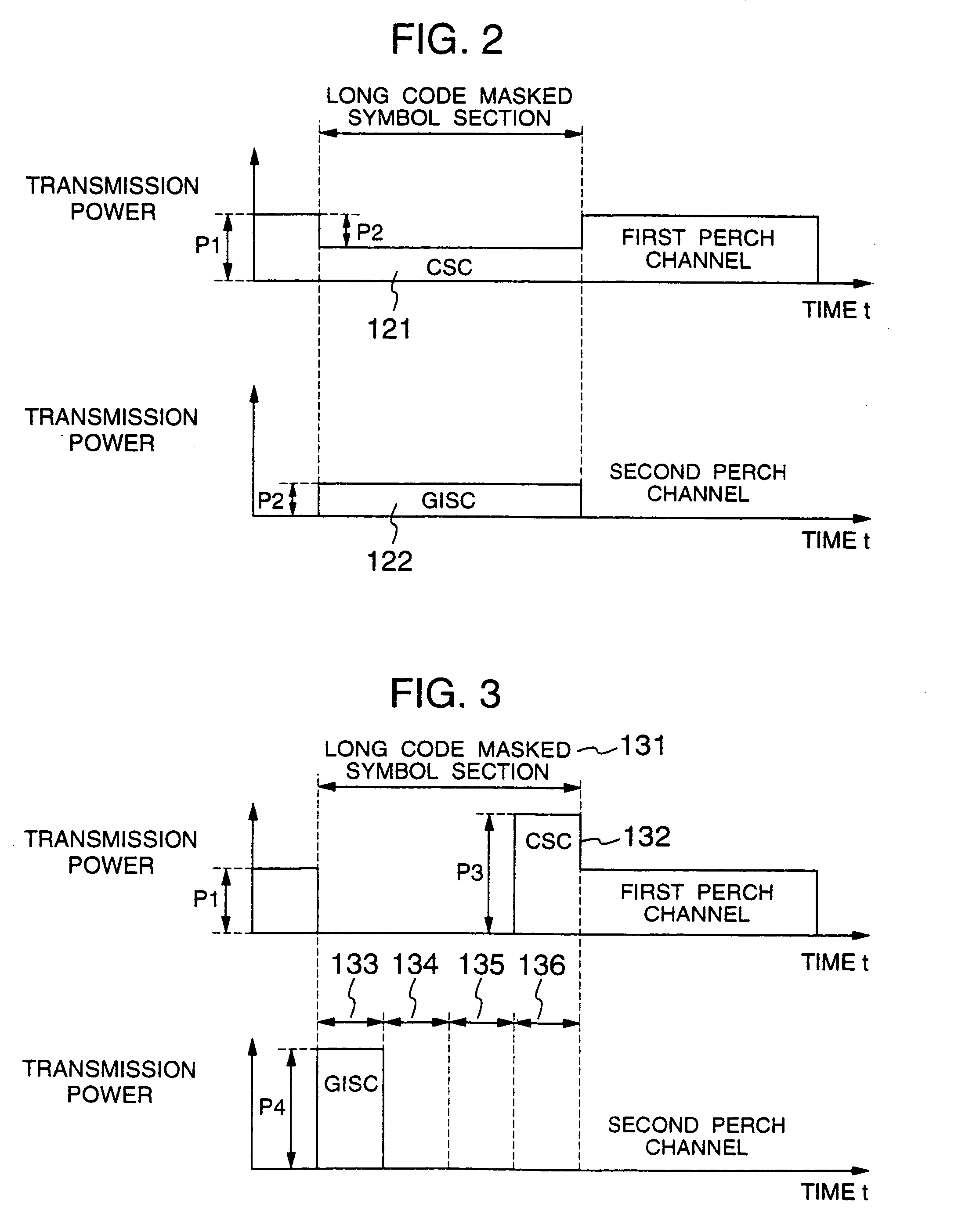Code division multiple access mobile communication system
a mobile communication system and code division technology, applied in multiplex communication, radio transmission, electrical equipment, etc., can solve the problems of large gate size and power consumption of the mf, the time required for timing synchronization becomes longer, and the time required for cell search becomes very large, so as to suppress the gate size and high speed
- Summary
- Abstract
- Description
- Claims
- Application Information
AI Technical Summary
Benefits of technology
Problems solved by technology
Method used
Image
Examples
first embodiment
[0038]As a first embodiment, FIG. 3 shows a channel format and transmission power in the case where spreading factors of the CSC and GISC are made smaller (64 in the example) than those of other symbols of the perch channels, and the CSC and GISC are inserted at different timing instants. In order to prevent other ordinary symbol portions from being affected, a masked symbol section 131 is made to have 256 chips in the same way as the conventional system. The CSC and GISC may be inserted in any section of four sections (133, 134, 135 and 136) obtained by dividing the mask symbol section at intervals of 64 chips. In the case where the symbol length of the GISC becomes short and consequently the number of GISCs is not enough for the number of classes of the long code which GISCs are assigned to, it is also possible to adopt such a method that long code identification groups are sorted out according to which of the tour insertion sections they are inserted. In the masked symbol section...
second embodiment
[0040]As a second embodiment, FIG. 4 shows a channel format and transmission power in the case where the spreading factors of the CSC and GISC are made sufficiently small (16 in the example) as compared with other symbols of the perch channels, and the CSC and GISC are multiplexed and transmitted. It is necessary to make transmission power P5 of the CSC and transmission power P6 of the GISC large so as to correspond to the spreading factors. If the symbol rate of channels other than perch channels is fast, then the number of perch channels which are affected by the fact that the perch channel power is increased will become large. In such a case, by multiplexing the CSC and GISC to shorten the section in which the transmission power becomes large as in the present embodiment, although the influence of the perch channels on other channels may be large, the shortening of the affecting symbol section surely causes influence as a whole to be lightened.
third embodiment
[0041]As a third embodiment, FIG. 5 shows a channel format and transmission power in the case where the spreading factors of the CSC and GISC are made sufficiently small (64 in the example) as compared with other symbols of the perch channels, and the GISC is repeated a plurality of times (three time in the example). By transmitting the GISC repetitively n times, the number of accumulation times is increased, and accordingly transmission power P8 of the GISC of one time is equal to 1 / n of transmission power P7 of the CSC. As a result, influence on other channels is suppressed.
PUM
 Login to View More
Login to View More Abstract
Description
Claims
Application Information
 Login to View More
Login to View More - R&D
- Intellectual Property
- Life Sciences
- Materials
- Tech Scout
- Unparalleled Data Quality
- Higher Quality Content
- 60% Fewer Hallucinations
Browse by: Latest US Patents, China's latest patents, Technical Efficacy Thesaurus, Application Domain, Technology Topic, Popular Technical Reports.
© 2025 PatSnap. All rights reserved.Legal|Privacy policy|Modern Slavery Act Transparency Statement|Sitemap|About US| Contact US: help@patsnap.com



